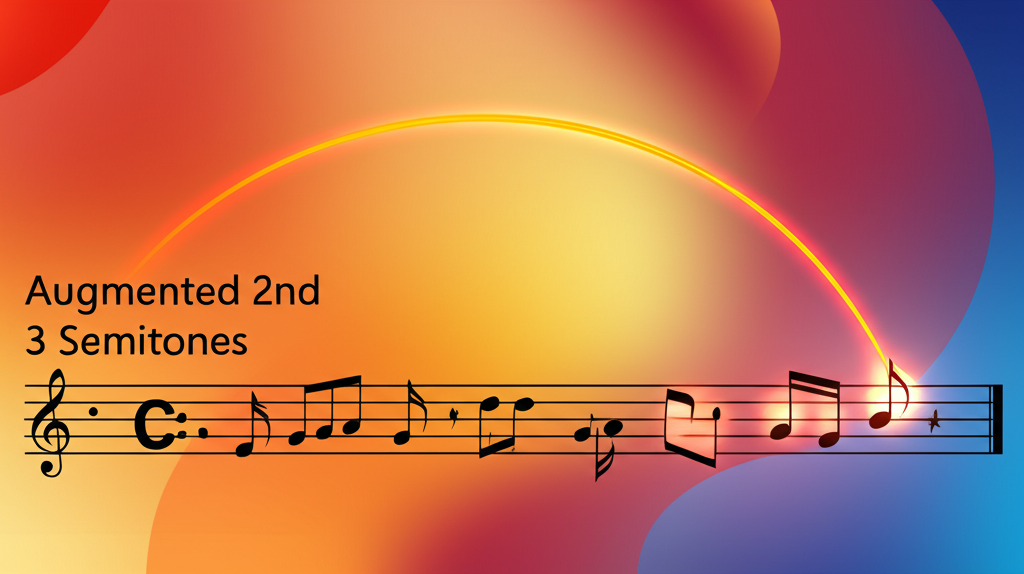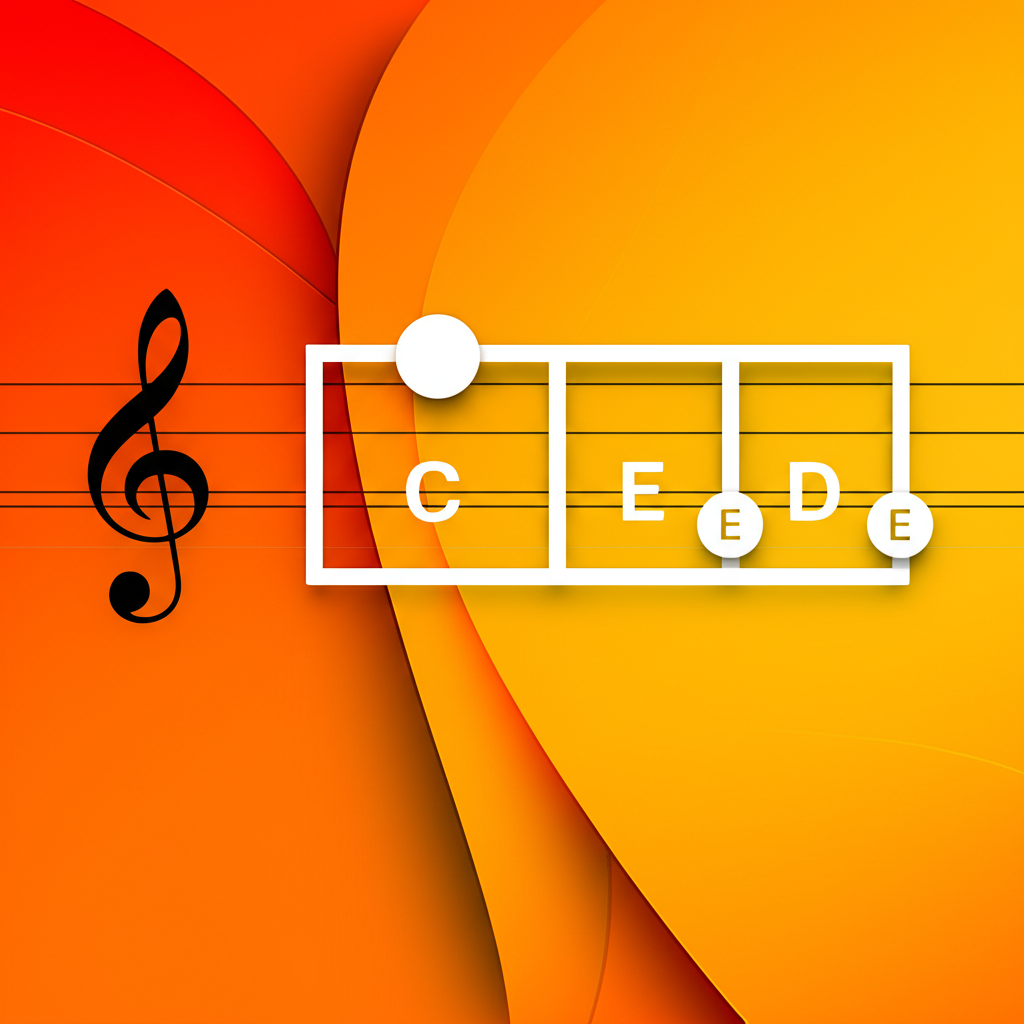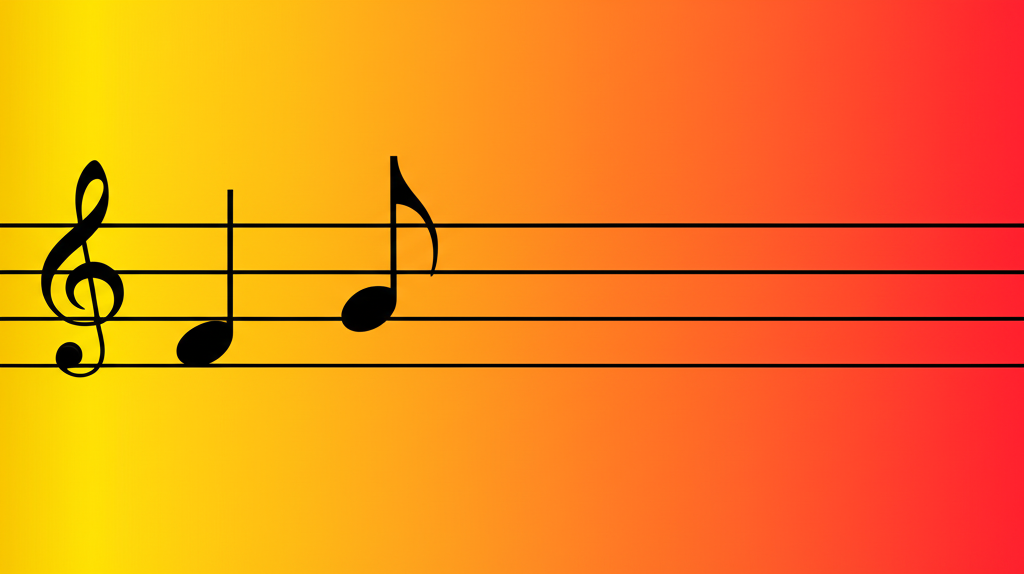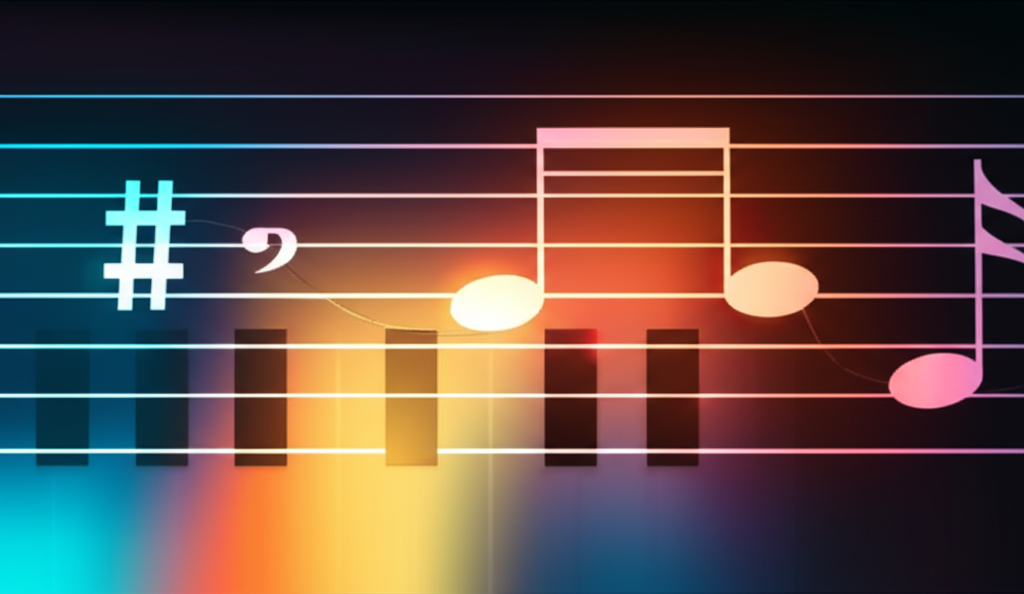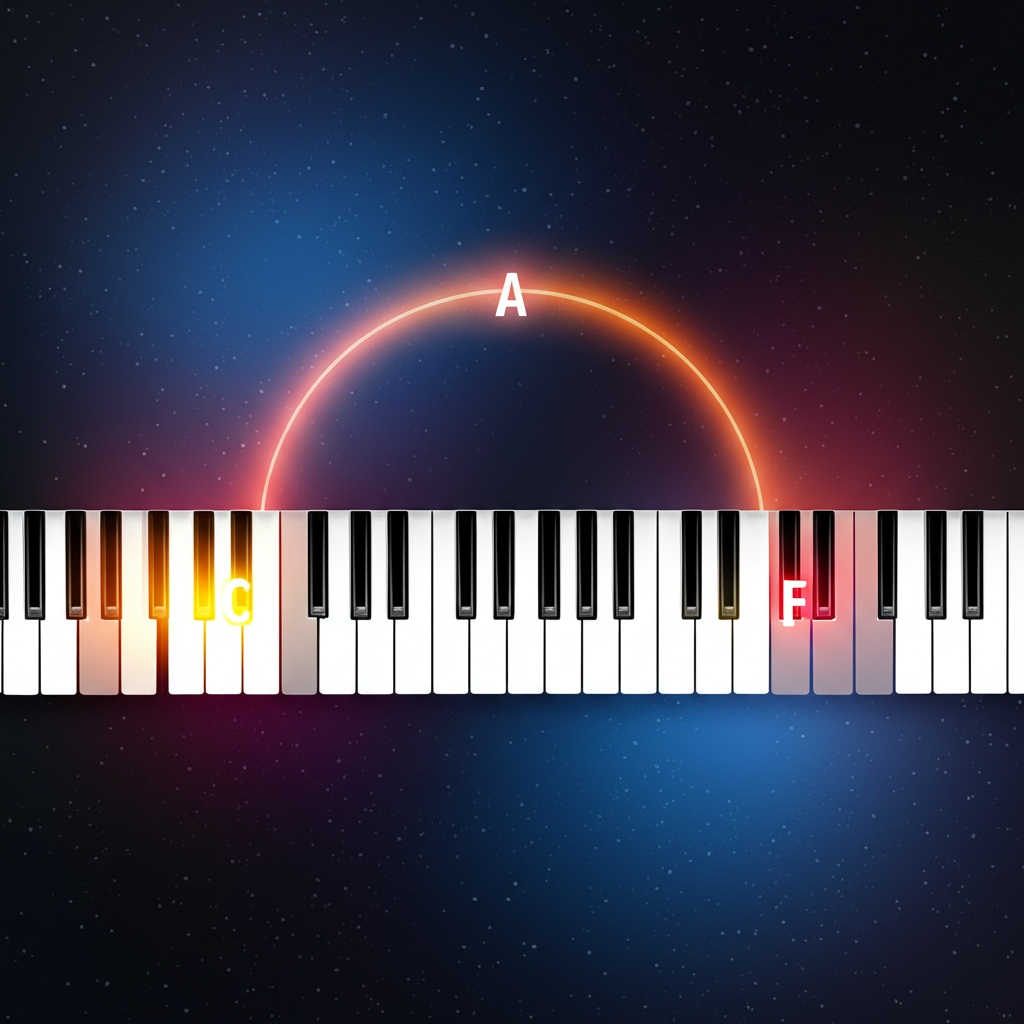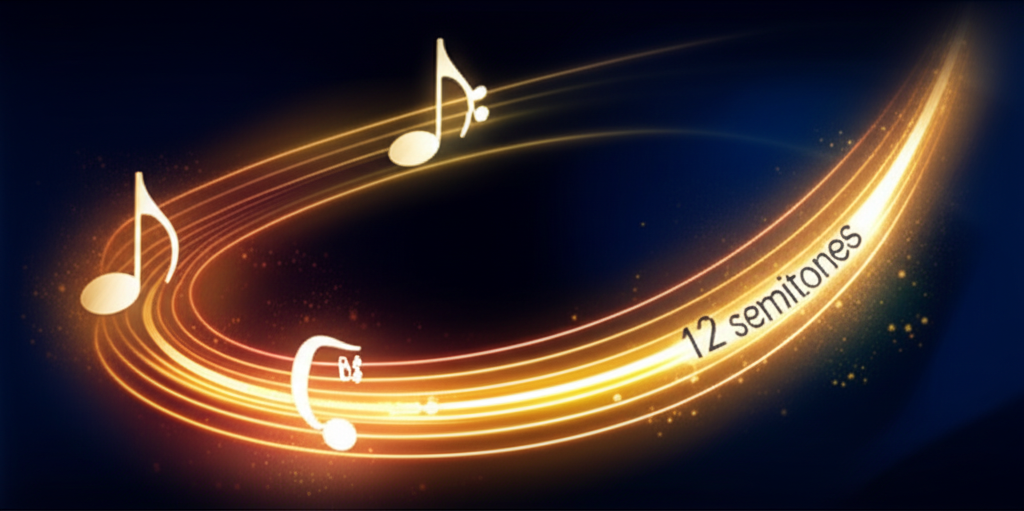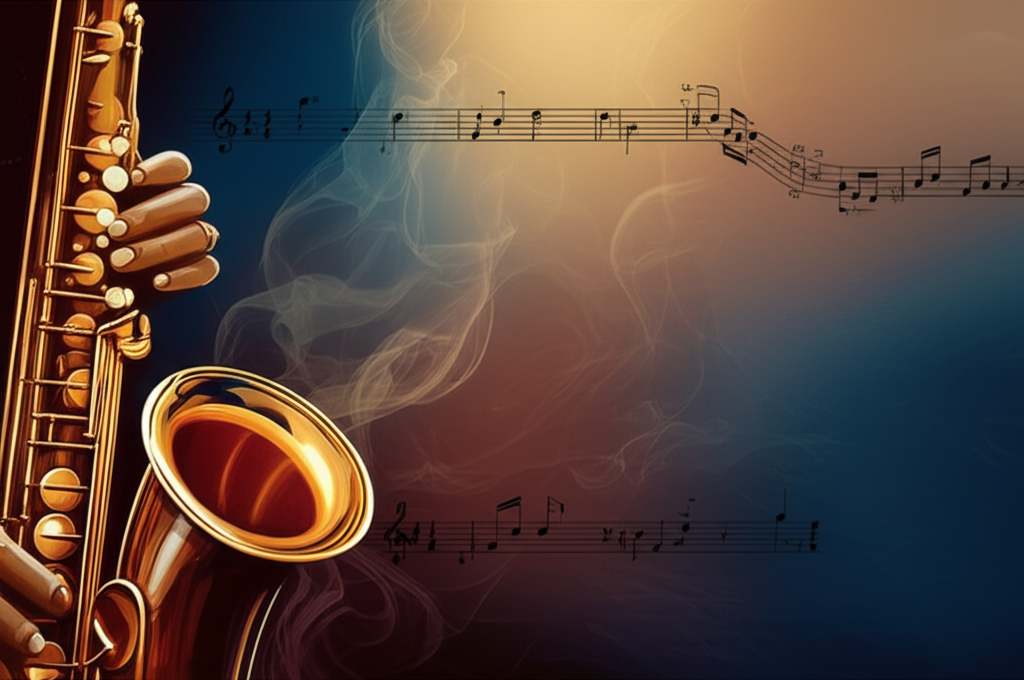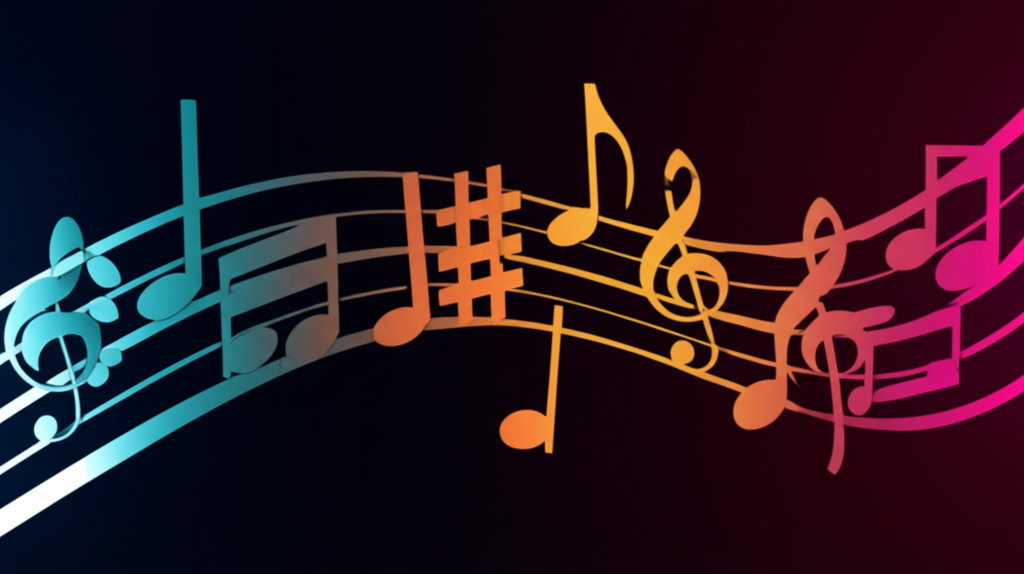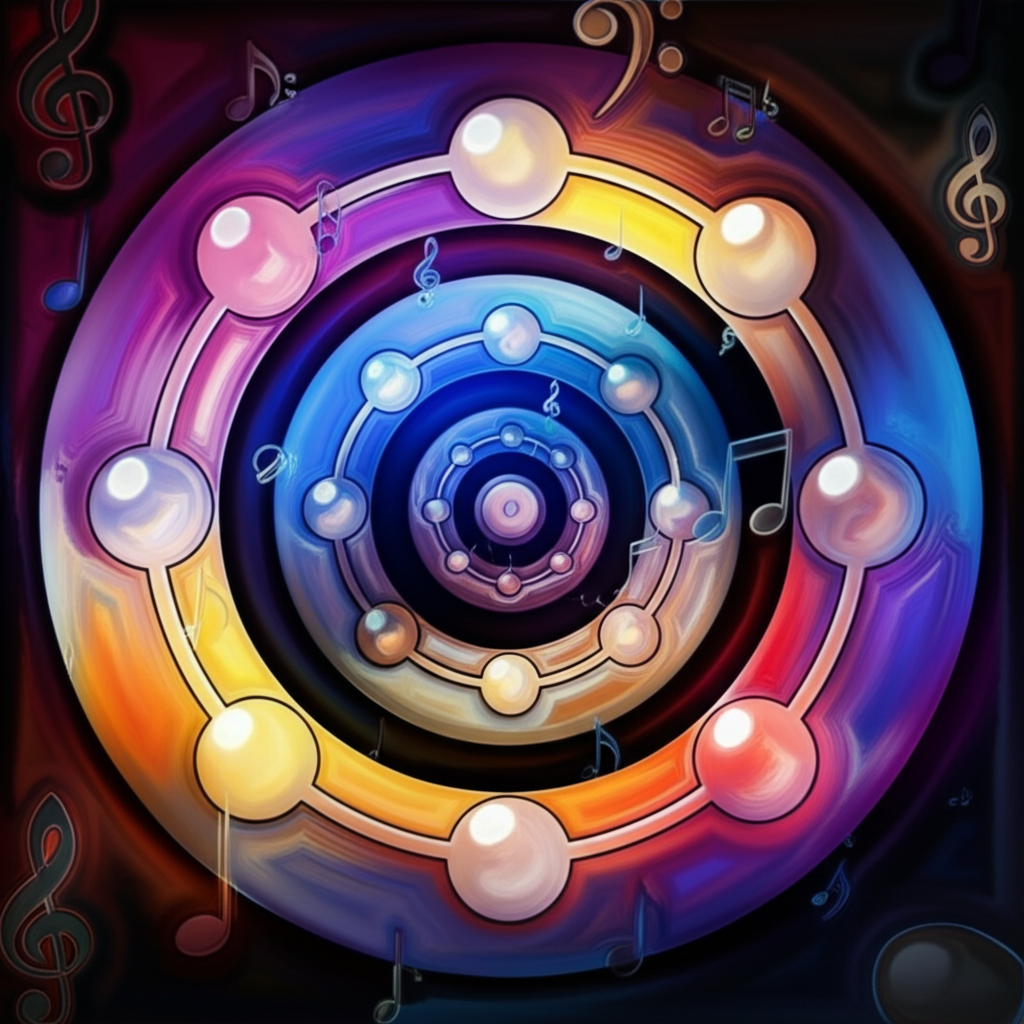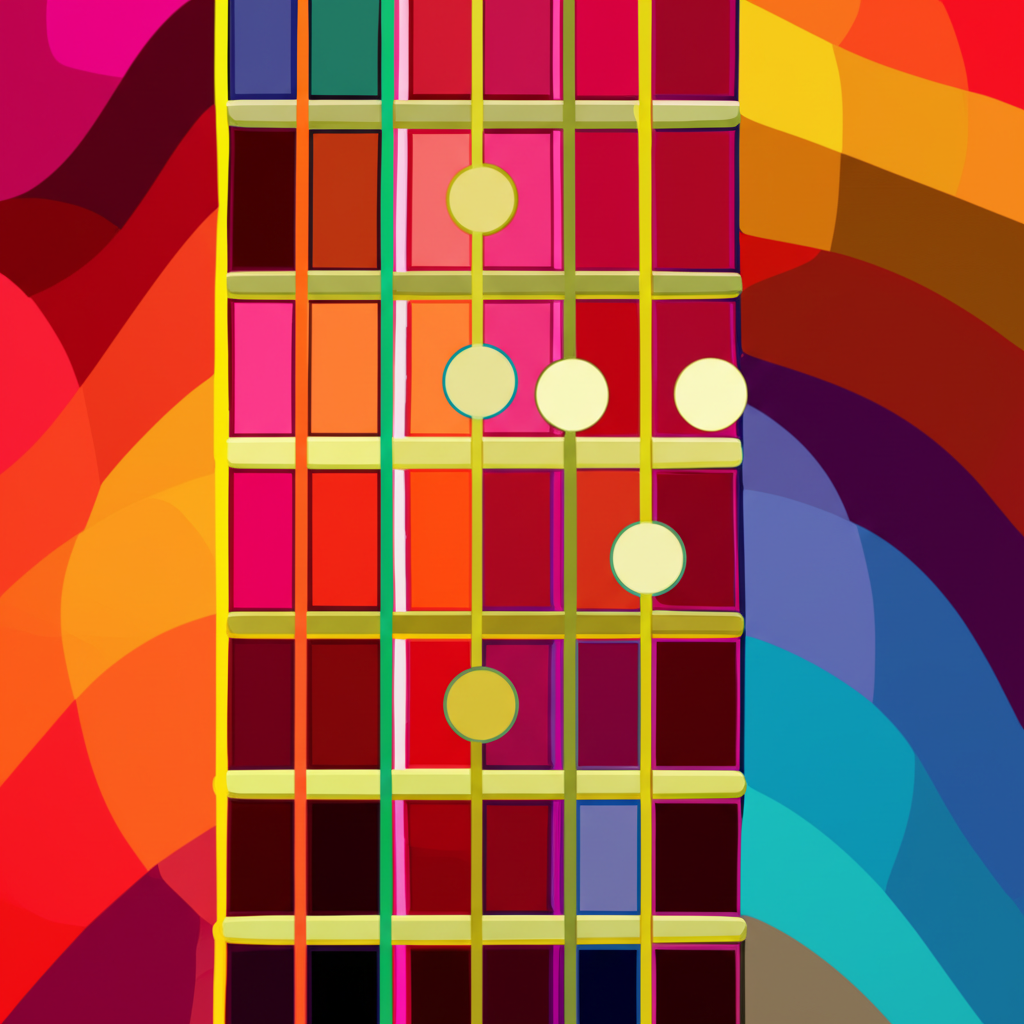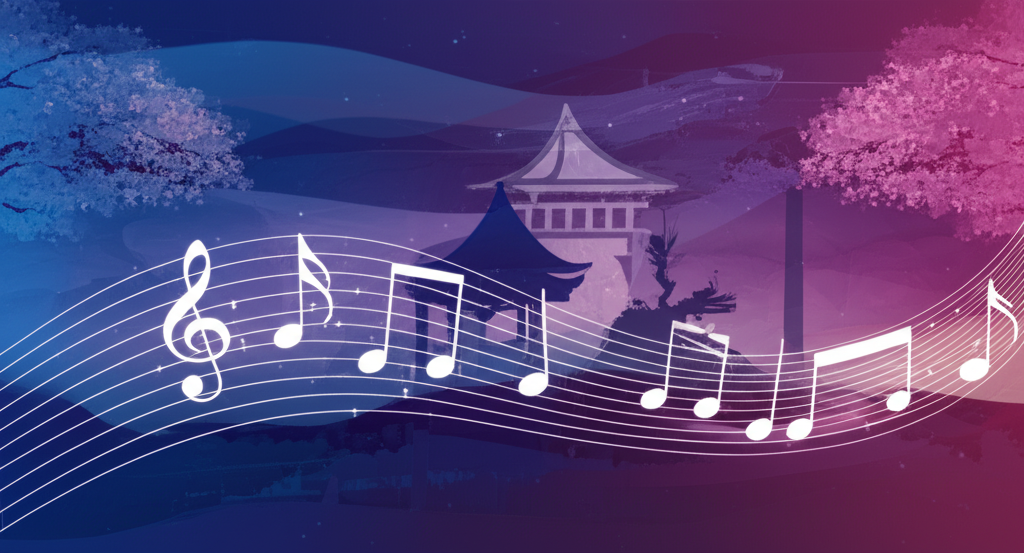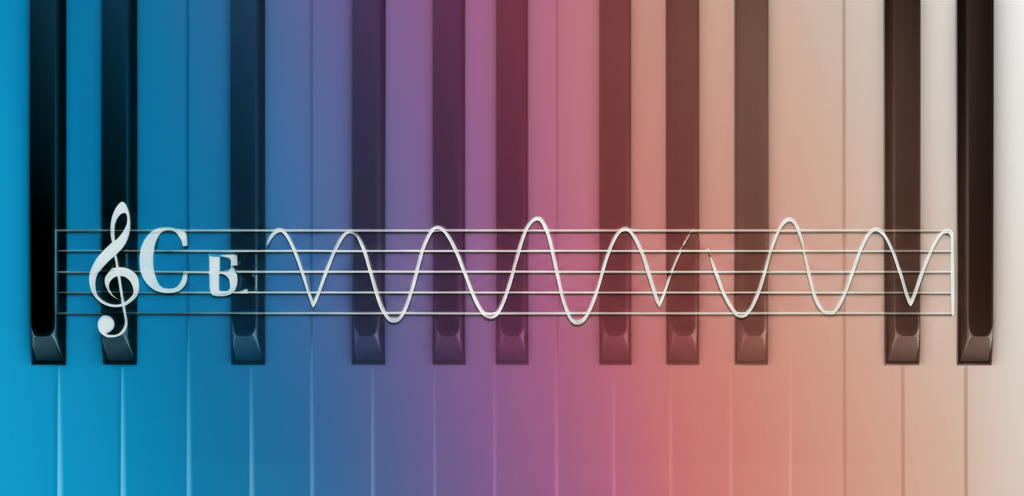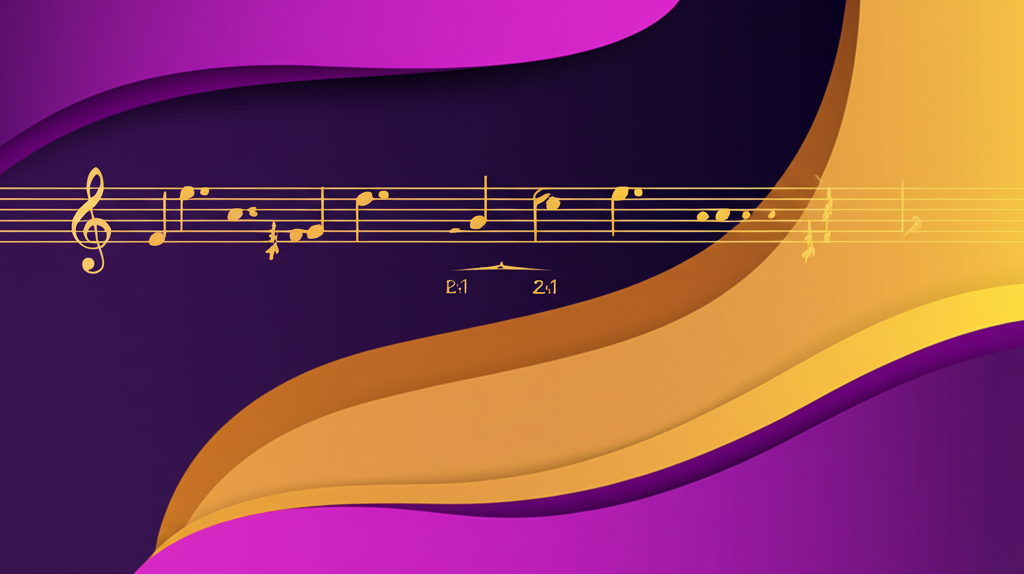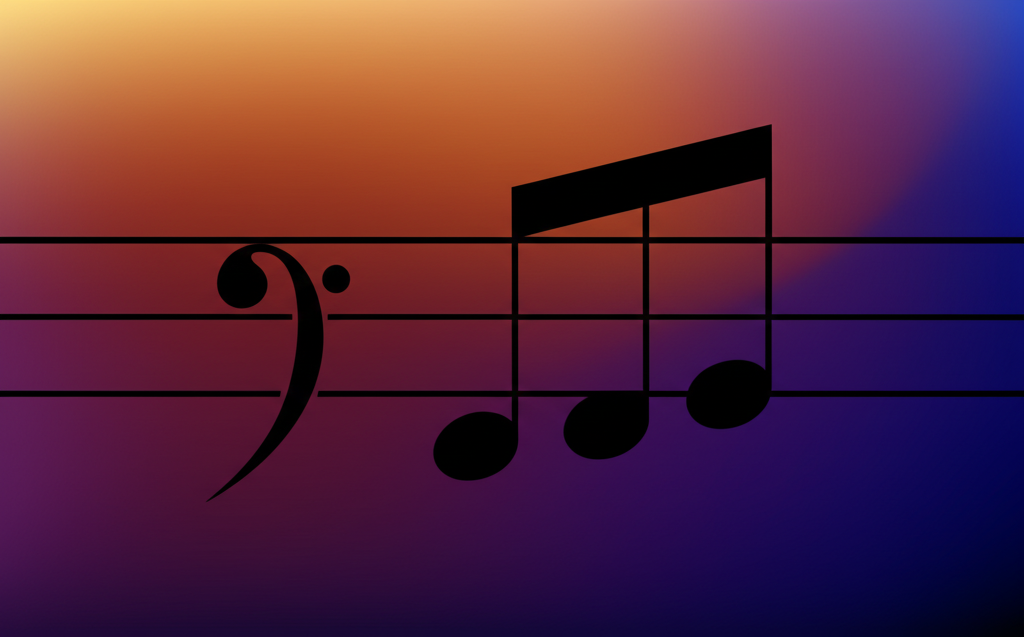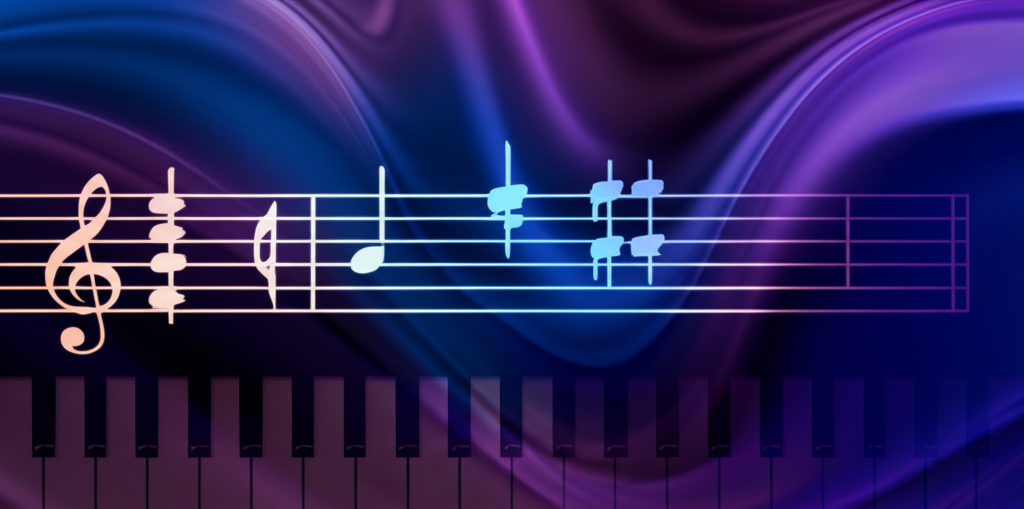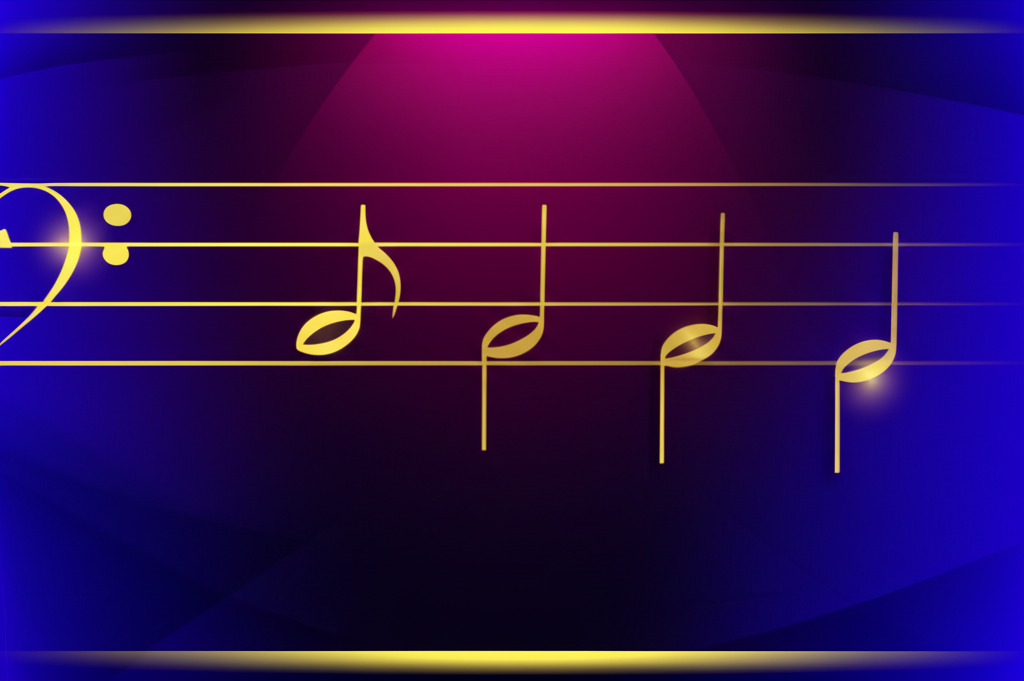
The Chromatic Scale: Foundation of Western Music
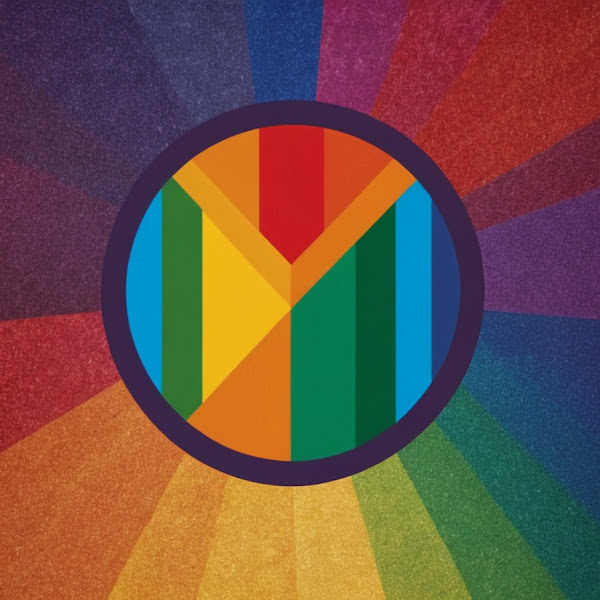
b4n1
May 17, 2025, 4:26 p.m.
The Chromatic Scale: Foundation of Western Music
Summary:
The chromatic scale serves as the foundation of Western music theory, containing all twelve pitches within an octave. This comprehensive article explores the chromatic scale's structure, characteristics, and practical applications. Understanding this fundamental building block provides musicians with essential insights into musical construction across genres and traditions.
Keywords:
Chromatic scale, semitones, twelve-tone system, equal temperament, enharmonic equivalents, music theory, microtones.
Introduction:
In Western music, the chromatic scale represents the complete palette of twelve pitches from which virtually all musical compositions are created. Like primary colors that can be mixed to create countless hues, these twelve tones combine to form the rich tapestry of musical expression. From Bach to The Beatles, Debussy to Duke Ellington, composers across centuries and genres have drawn from this fundamental resource.
The chromatic scale emerged gradually as Western music evolved, with its current form standardized during the rise of equal temperament in the 18th century. This tuning system divides the octave into twelve equal semitones, allowing music to be played in any key with consistent intonation. Understanding the chromatic scale is essential for grasping how other musical elements function and interact.
Structure and Properties
The chromatic scale consists of all twelve pitches within an octave, each separated by a semitone (the smallest interval in Western music). In equal temperament, which has been the standard tuning system since the 18th century, these twelve semitones divide the octave into equal parts.
When written in ascending order from C, the chromatic scale includes:
And when descending:
Notice that in the ascending scale, we typically use sharps (♯), while in the descending scale, we use flats (♭). The choice of notation depends on the musical context and theoretical considerations.
Notation and Terminology
Each note in the chromatic scale can be identified in multiple ways:
- Letter name with accidental: C, C♯/D♭, D, D♯/E♭, E, F, F♯/G♭, G, G♯/A♭, A, A♯/B♭, B
- Scale degree (in C major): 1, ♯1/♭2, 2, ♯2/♭3, 3, 4, ♯4/♭5, 5, ♯5/♭6, 6, ♯6/♭7, 7
- Semitone number: 0, 1, 2, 3, 4, 5, 6, 7, 8, 9, 10, 11 (with C as 0)
- Frequency ratios: In equal temperament, each semitone represents a frequency ratio of the 12th root of 2 (approximately 1.059)
Notes that have identical pitch but different names (such as F♯ and G♭) are called enharmonic equivalents. In equal temperament, these notes sound identical but are spelled differently depending on musical context, key signature, and harmonic function.
Chromatic Scale on Different Instruments
The chromatic scale manifests differently across various instruments:
- Piano: Spans the white and black keys, with each key representing one chromatic pitch
- Guitar: Created by playing one fret at a time on a single string, or across multiple strings using specific fingerings
- Wind instruments: Require specific fingering combinations, sometimes with alternate fingerings available for certain notes
- String instruments: Generated by placing fingers at precise points along the string length
- Voice: Can sing semitones through careful pitch control and ear training
The equal temperament system of tuning that underlies our modern chromatic scale is a compromise. It allows all keys to sound equally in tune (or equally out of tune, depending on your perspective) and enables modulation between keys. Earlier tuning systems provided purer intervals in certain keys but made others sound dissonant.
Historical Development
The chromatic scale as we know it today developed gradually throughout Western music history:
- Ancient and Medieval: Music was primarily diatonic, with occasional chromatic alterations
- Renaissance: Increased use of chromaticism for expressive purposes and text painting
- Baroque: Well-tempered tuning systems allowed full exploration of all keys (e.g., Bach's "Well-Tempered Clavier")
- Classical and Romantic: Growing use of chromaticism for modulation and expression
- Late 19th/Early 20th Century: Extreme chromaticism eventually led to the breakdown of tonality
- 20th Century: Twelve-tone techniques and serialism used the chromatic scale as a structural principle
Composers like Wagner, Debussy, and Schoenberg pushed the boundaries of chromaticism, eventually leading to atonal and serial compositions that treated all twelve tones with equal importance.
Chromatic Techniques
The chromatic scale has been used in numerous ways throughout music history:
- Chromatic Passing Tones: Non-harmonic notes that connect diatonic tones by semitone
- Chromatic Neighbor Tones: Ornaments that move a semitone away from a primary note and back
- Chromatic Modulation: Using chromatic tones to smoothly transition between keys
- Chromatic Mediant Relationships: Harmonic movement between chords whose roots are a third apart with at least one chromatic relationship
- Chromatic Scales as Melodic Elements: Rapid ascending or descending chromatic runs for dramatic effect
Beyond Equal Temperament: Microtones
While the standard chromatic scale divides the octave into twelve equal parts, many musical traditions around the world use microtones—intervals smaller than a semitone:
- Arabic Maqams: Use quarter tones (half of a semitone)
- Indian Ragas: Employ shruti, with up to 22 possible tones in an octave
- Turkish Music: Divides the octave into 53 commas
- Contemporary Western Music: Experimental composers have explored 24-tone equal temperament and other microtonal systems
Modern composers like Harry Partch and Ben Johnston have developed instruments and notation systems for microtonal music, expanding beyond the traditional chromatic scale.
The Chromatic Scale in Various Genres
The use of the chromatic scale varies across musical genres:
- Classical: From subtle chromatic inflections in Bach to the extreme chromaticism of Wagner's "Tristan und Isolde"
- Jazz: Bebop extensively uses chromatic passing tones and substitutions
- Blues: Incorporates "blue notes" that exist between the cracks of the chromatic scale
- Rock and Metal: Often features chromatic riffs and progressions
- Film Music: Uses chromatic techniques for tension and release in emotional scenes
In jazz improvisation, for instance, chromatic approach notes are essential for creating smooth voice leading and tension:
Notación musical:
Practical Applications
Understanding and practicing the chromatic scale offers numerous benefits for musicians:
- Technical Facility: Practicing chromatic exercises develops finger dexterity and coordination
- Ear Training: Recognizing chromatic intervals improves pitch perception
- Composition: Provides tools for creating tension, surprise, and color
- Improvisation: Enables smooth connection between different tonal areas
- Analysis: Helps identify voice-leading and modulation techniques in complex music
Chromatic exercises often form an essential part of a musician's technical practice routine:
Conclusion
The chromatic scale, with its twelve equidistant semitones, provides the fundamental pitch material for Western music. Its development revolutionized our approach to harmony, modulation, and musical expression. From the subtle chromaticism of Mozart to the tone rows of Schoenberg, from the blues inflections of Billie Holiday to the metal riffs of Metallica, the chromatic scale's influence extends across nearly all Western musical traditions.
As a musician, developing fluency with the chromatic scale—both technically and theoretically—opens doors to a deeper understanding of music's inner workings. Whether you're composing, improvising, or analyzing, the chromatic scale offers a powerful framework for musical thinking and expression.
The beauty of the chromatic scale lies in its simplicity and versatility—twelve simple semitones that, in various combinations, have given us centuries of musical masterpieces and continue to inspire new musical explorations today.
References:
-
Kostka, S., & Payne, D. (2018). Tonal Harmony: With an Introduction to Post-Tonal Music (8th ed.). McGraw-Hill Education.
-
Persichetti, V. (1961). Twentieth-Century Harmony: Creative Aspects and Practice. W. W. Norton & Company.
-
Schoenberg, A. (1983). Theory of Harmony (R. E. Carter, Trans.). University of California Press. (Original work published 1911)
-
Tagg, P. (2014). Everyday Tonality II: Towards a Tonal Theory of What Most People Hear. The Mass Media Music Scholars' Press.
-
Isacoff, S. (2003). Temperament: How Music Became a Battleground for the Great Minds of Western Civilization. Vintage.
